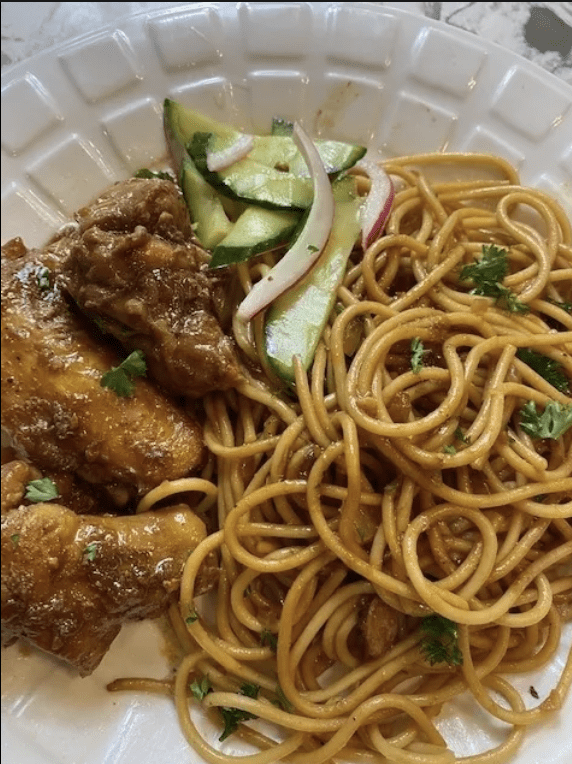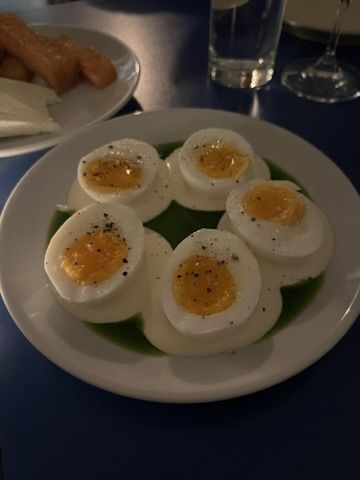Savoring Stories: A Culinary Expedition into Dutch Culture and Colonial Histories
By: Sasha Lehrer
Embarking on a journey through the heart of the Netherlands, I discovered that the vibrant tapestry of Dutch culture is intricately woven into the fabric of its culinary traditions. Beyond the windmills, tulip fields, and picturesque canals, I decided to explore Dutch history through the lens of its diverse and delectable cuisine, unraveling the ties between culture and food.
One culinary adventure that stood out was my exploration of Surinamese food. Surinam, a former Dutch colony, has left an indelible mark on Dutch culinary culture. The fusion of Dutch, African, Indonesian, and Indian influences creates a unique flavor palette that reflects the rich and complex history of the region.
Sampling Surinamese dishes, such as Roti and Pom, transported me through time and across continents. Roti, a dish of Indian origin, showcases the influence of the Dutch East India Company's spice trade. The aromatic blend of spices in Surinamese cuisine is a testament to the cultural intersections that occurred during the colonial era.
Delving deeper into Dutch colonial history, I explored the impact of the spice trade on Indonesian cuisine. Dishes like Nasi Goreng and Rendang not only tantalized my taste buds but also revealed the global connections forged by Dutch traders in the Indonesian archipelago. The Dutch East Indies' culinary legacy is alive and well in the Netherlands, creating a delightful fusion that encapsulates the essence of cross-cultural exchange.
The exploration of Dutch food is not merely a feast for the senses; it's a journey through the annals of history. The ubiquity of cheese in Dutch cuisine, for example, unveils the historical significance of dairy farming in the region. Visiting a local cheese market allowed me to witness the continuation of traditions that have endured for centuries.
As I traversed the landscapes of Dutch culture through food, I encountered the bittersweet legacy of the Dutch slave trade. The presence of Surinamese and Indonesian cuisines, deeply rooted in the colonial past, serves as a reminder of the painful histories woven into the fabric of Dutch prosperity.
In conclusion, my culinary expedition through Dutch culture uncovered a rich tapestry of flavors, each dish narrating a story of historical intersections and cultural exchanges. From the spice-laden streets of Surinam to the aromatic kitchens inspired by the Indonesian archipelago, the tie between culture and food in the Netherlands is a testament to the diverse influences that have shaped this nation. As I continue my journey, fork in hand, I am reminded that each bite is not just a culinary delight but a communion with the intricate threads of Dutch history.
Related Posts

EAT, DRINK, EXPLORE: AMSTERDAM
BEST FOOD TO EAT IN AMSTERDAM You’ll be craving apple pie ( appeltaart) long after you’ve returned home from studying abroad in Amsterdam. That’s because it’s not your grandmother’s apple... keep reading

Pathé Tuschinski Movie Theater in Amsterdam
By: Ellie Stein If you are a movie lover like me, Amsterdam’s 1920s movie theater will be one of your favorite spots to visit in Amsterdam. The art deco style... keep reading

Embracing Sustainable Travel
By: Mya Cummins When I decided to study abroad in Amsterdam with CIEE, I knew I’d be stepping into a city famous for its canals, art, and rich history. What... keep reading


